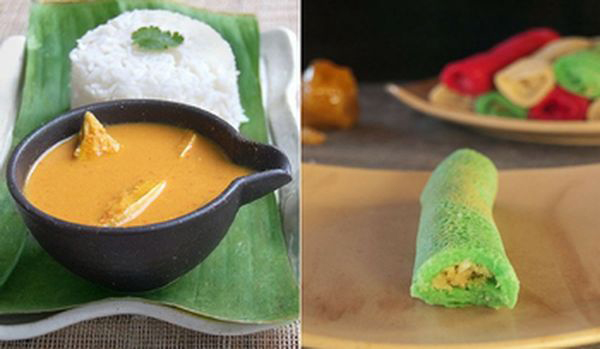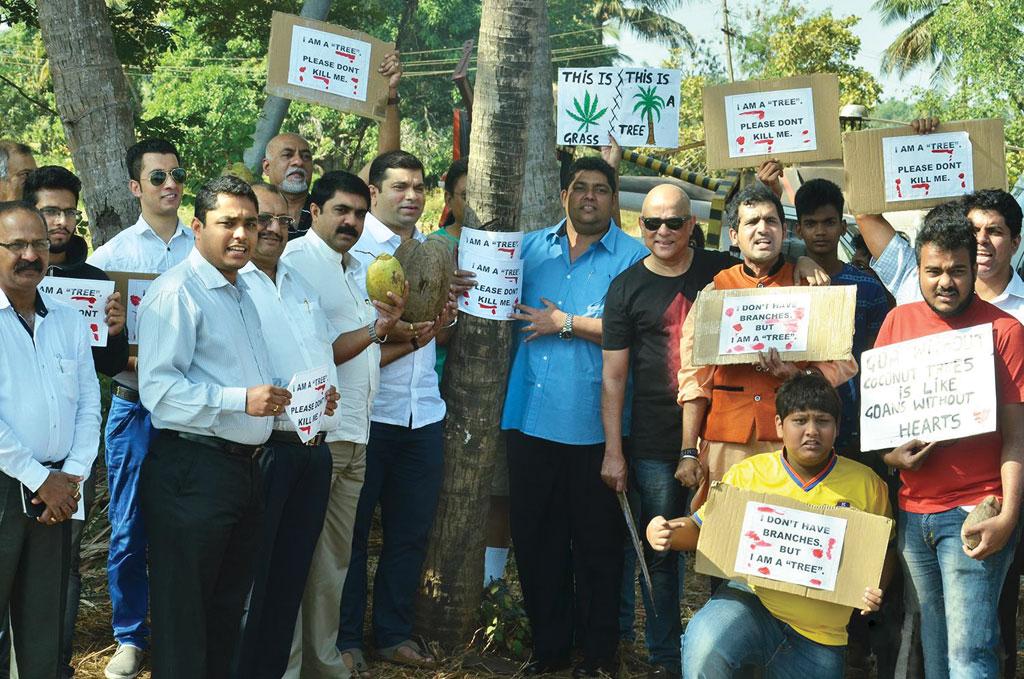In the iconic 1988 song Mile sur mera tumhara, each state is represented with visuals of entities that define it best. So, when Goa's turn came, beaches hogged the limelight in the video. We also catch a glimpse of Mario Miranda, one of India's best-known cartoonists, facing the sea, immersed in a sketch he is working on, occasionally looking away from the canvas towards the fishermen for inspiration. Miranda's finished illustration shows these men in the backdrop of the sea, with lush coconut fronds dotting the landscape. Coconut trees have more than once found a spot in Miranda's illustrations, which capture the pulse of the natives and culture of his home state—Goa.
Little would Miranda have known that in the very year his state celebrated his 90th birth anniversary, the much-loved coconut tree would be at the heart of a controversy. In January 2016, during the previous stint of the BJP government in Goa, authorities shocked everybody by announcing that coconut palm would no longer be considered a tree, but 'grass'. "Botanically, the coconut tree is not even a tree, because it does not have branches," Goa Environment Minister Rajendra Arlekar said.
'Cocos nucifera', aka coconut, was declassified as a tree and dropped from the list of trees protected under the Goa, Daman and Diu Preservation of Trees Act, 1984. The amendment facilitated mass cutting down of coconut trees for industrialisation, claimed activists. This move set off opposition parties, green activists and the local people of Goa. Social media exploded with reactions, and people literally took to the coconut groves for protests.
Taking a cue from the Chipko Movement, activists organised Save Coconut Chipko Andolan—protestors walked out and hugged the coconut trees, the soul of their home state. “The protest began on January 11, 2016, and ended on August 2 this year after the government withdrew the amendment,” said Prajal Sakhardande, convenor of the movement, organised by Goa Heritage Action Group.
Numerous petitions and protests later, the humble coconut tree emerged victorious. In August this year, it was re-inducted into the list of trees, and accorded the status of State Tree, too. After suffering a setback in the March assembly polls and scrambling back to power with a coalition, the state government, led by Chief Minister Manohar Parrikar, seems to have sensed the mood of the people.
“The whole thing started when a liquor factory was planned to be set up in a coconut orchard in south Goa,” said Sabina Martins, convenor of Goa Bachao Abhiyan. This would mean axing more than 1,000 coconut trees. By declassifying coconut, she said, the government was trying to make things easier for real estate and industrial projects that were eyeing such coconut plantation lands for massive projects.
 Goan fish curry with rice, ale bele rolls | via Pinterest
Goan fish curry with rice, ale bele rolls | via Pinterest
“All this is just a stupid political stunt,” said Claude Alvares, senior environmentalist and director of the Goa Foundation, a non-profit environmental monitoring group. “One day they declassify it, the next time they declare it the state tree to win people's favour. None of these decisions, however, really make a difference. Rampant cutting of trees, be it coconut or others, still continues for road widening, industrialisation and real estate projects,” he said.
Alvares is critical of all political parties. “Each time a government comes to power, you feel this one is worse. The Congress was bad, but the BJP has worsened the situation.”
The coconut turned out to be a major headache because people in Goa closely associate with a coconut tree, he added.
Fish curry, rice and coconut
“The coconut tree is not just about our identity, it is about our memories,” reiterates Martins. In her book, Eating India: Exploring the Food and Culture of the Land of Spice, food historian Chitrita Banerji writes: “The one item that dominates and unites all the contrary elements in a Goanese kitchen, Christian, Hindu or Muslim, has to be the coconut. So pervasive is its influence that even in recipes that call for cow's milk, the Goanese cook will use coconut milk.
“Not only is the coconut used in a hundred different ways to cook fish and meat in Goa, but it also plays an important role in desserts,” she adds. Be it the traditional Goan coconut fish curry, khatkhatem (an assorted vegetable curry in coconut milk gravy), sticky coconut milk rice or the ale-bele (a rolled pancake with coconut and jaggery filling), there is no compromising on the star ingredient. Not to forget the much-loved Feni—local toddy extracted from the sap of the coconut.
Beyond taste buds, the coconut finds a central place in local traditions. Roce, a vibrant wedding ceremony popular among the Catholics of Goa, involves bathing the bride and groom in coconut milk—quite similar to the haldi ceremony common in north Indian weddings.
Every part of the coconut is also put to use. The coconut fibre is used to weave coir ropes and mats, while the fronds are used to thatch roofs. Empty coconut shells are often crafted into handicrafts, cutlery or jewellery.
Beyond the coconut tree
Alvarez, however, points at a much larger problem—the changing face of Goa's population. “Of the 15 lakh people in the state, the original people of Goa are not more than 7 lakh,” he said. A good number of people are moving out and they are being replaced by many from other states. They don't connect with fish or rice, and may not care if you have a coconut tree or not,” he added. The inherent culture and spirit of Goa, he fears, is getting eroded. Political leaders have brought in people, often labourers from outside, building pockets of vote banks for themselves, Alvarez said.
The food is changing, the drug scene is really murky; this is not the Goa people like Alvarez have known. As the demographics change, they fear, culture will be the loser. That is probably why, over the last two years, certain villages have started organising local festivals and feasts where they invite people to come celebrate the authentic food, Konkani music and dance.
“Goan communities are trying create some identity for themselves in this non-Goan, non-cultural invasion sweeping the coastal areas,” said Alvarez.





